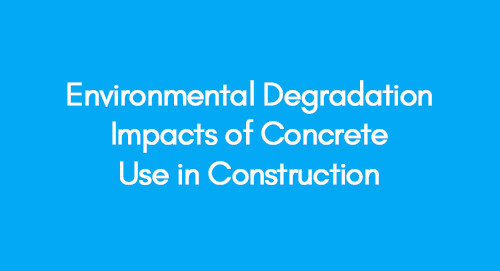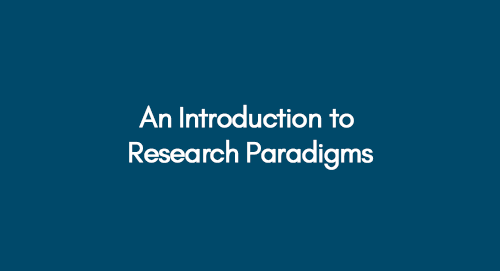
Soil Remediation Technologies
January 28, 2021
Flight Mechanics and Performance
January 28, 2021Introduction
Environmental friendly construction material has always been desired to fulfil the world’s need to reduce the emissions of CO2, provision healthy and aesthetically pleasing surroundings, save energy resources and minimise waste. For most economic sectors, environmental management systems are advocated recently, particularly in the construction sector. The environmental performance in many economies and organizations has been assessed by Environmental Performance Assessment. The development of the systems and processes can be implemented in the organization systems and significant savings can be made in environment and business resources and thus smaller environmental impacts. Development of the environmental management system is required not only to reduce the consumption of environmental resources and production units but also to increase the organizational capacity of competition and improve economical efficiency. At the same time, the relationships have been enhanced within the organizational systems, and the emission of harmful substances in the environment is reduced by the development of a healthy social environment. The relationship of process innovation to the environment requires comprehensive knowledge of creative and co-dependent collaboration for the achievement of environmentally friendly and safe operations in the construction industry.
Policy Implications of Environmental Management Systems
There are many international standards for environmental pollution, a system for the construction industry is i.e. ISO 14000. For the management of environmental issues, ISO 14000 has a series of international standards. The impact of a company’s activities on the natural environment can be assessed by the environmental management system which is a tool of ISO 14000. For a construction company, it has been found to achieve the certifications under ISO 14000. In the construction industry, environmental management has been maintained by following 5 stages (HK, 2007)
- Issuing environmental policies
- Planning
- Implementation and operation
- Checking and
- Corrective action
- Management review
Construction management is required to develop systematic methods and policies under ISO 14001 to deal with the problems of environmental emissions. Specific targets, programs and objectives are required to be established by the construction industries under certification procedures. The magnitude and the sources of the pollution hazards should be identified by a thorough analysis of the construction methods and operations. The sustainable implementation and suitability of the established policies and methods can be ensured by a regular management review of the systems. Total cooperation and commitment are needed within the firm for the implementation of the environmental management system under ISO 14001 (Kuhre, 1998). In many cases, the implications of the international policies are found to be difficult that resulting in higher project costs as the contractors are also required to pay for the protections against environmental hazards and emissions. Lack of awareness of environmental protection among common people is another hindrance to achieving the best results. The government is required to reinforce environmental protection laws and promote protection strategies among the general people (Morledge, 2001).
Environmental problems with concrete and management plan
Concrete has affected the environment in many ways. A few of the hazardous effects are discussed below.
CO2 emissions
The emission of CO2 is the major problem of the construction industry that causes global warming. A ton of CO2 is emitted with every ton of cement produced. Considering the conventional mixtures of concrete without using silica fumes, slag or ash 480-kilo gram of CO2 is emitted with each cubic meter of concrete(Shen, 2002).
Nitrous oxide emissions
Nitrous oxide emissions are one of the greenhouse gas emissions. The cement kilns emit about 1.5-9.5kg of NOx per ton. The reduction of the burning temperature and introduction of the ammonia compounds in the exhaust stream can reduce NOx emissions.
Particulate air emissions
From the exhaust gas, the particulate emissions have been estimated to be about 0.3 - 1.0 kg per ton. The bag houses of the fabric filter also contain much of these emissions. The sodium and potassium plumes are the main reasons for these emissions. The plumes are suggested to be settled in the countryside to combat the acid rain more effectively. Carrying the procedure within the clinker stream may create problems with the aggregate reactions of an alkali. The limit for the hazardous and non-hazardous waste emissions in cement kilns has been defined in international policies of the environmental management systems (Tilford and Smith, 2002).
Visual pollution
The pollution resulting from the gaining procedures of the raw materials for the production of cement is called visual pollution. The long lives of the quarries are found to be a counter product to the improved efficiencies of the processes of quarrying or sculpturing the topography for visual effects. While paying special attention to public safety the end use might be considered for recreation or educational purposes (Tam and Zeng, 2002).
Traffic congestion
Large energy-efficient vehicles are required to mitigate traffic congestion during cement delivery. The dust and noise suppression is required to be achieved by erecting the plants of ready mix closer to its usage thus reducing traffic congestion.
Adverse health effects
The increased chromium content of the cement has affected the health of employees. The burning of waste products is the main reason for chromium emissions (Thoresen, 1999).
Water pollution
About one-half cubic meter of cement is being returned by trucks each day. The cement is then subjected to the washing procedures by using 1000 litres of water which is enough to pollute the water.
Recommendations
Environment-friendly concrete is required to be designed which must be durable. The recycled materials should be specified while designing the concrete i.e. PFA, SF, LW aggregates and slag. Cementitious material should be manufactured for its durability rather than strength. Design should minimize the wastes on-site through waste recycling strategies and has the least environmental damage. The material should not be overdesigned and should be based on the analysis of the cost-benefit. Structural integrity should be ensured. An effective management strategy should be developed to monitor, inspect and provide solutions to the expected defects in the environment. A planned maintenance program can be suggested for a consistent structure to be developed. The adverse effects of chromium on the health of employees can be reduced by decreasing the direct contact of human flesh with chromium.
References
- HK-BEAM Society (2007), HK-BEAM, From HK-BEAM Society, Hong Kong, Publications [available online] http://www.hk-beam.org.hk/general/home.php retrieved on 23 February 2013
- Kuhre, W. L. (1998). ISO 14031--environmental performance evaluation (EPE): practice tools and techniques for conducting an environmental performance evaluation. Prentice Hall PTR
- Morledge, R. and Jackson, F. (2001), Reducing environmental pollution caused by construction plant, Environmental Management and Health, Vol. 12 No. 2, pp. 191-206.
- Shen, L. Y. and Tam, W. Y. V. (2002), Implementing of environmental management in the Hong Kong construction industry, International Journal of Project Management, Vol. 20 No. 7, pp. 535-543.
- Tam, C. M., Tam, W. Y. V. and Zeng, S, X. (2002), Environmental performance evaluation for construction, Building Research and Information , Vol. 30 No. 5, pp. 349-361.
- Thoresen, J. (1999). Environmental performance evaluation - a tool for industrial improvement, Journal of Cleaner Production, Vol. 7 No. 5, pp. 365-370
- Tilford, K. R., Jaeslskis, E. J. and Smith, G. R, (2000), Impact of environmental contamination on construction projects, ASCE Journal of Construction Engineering and Management, Vol. 126 No. 1, pp. 45-51.
Get 3+ Free Dissertation Topics within 24 hours?


























